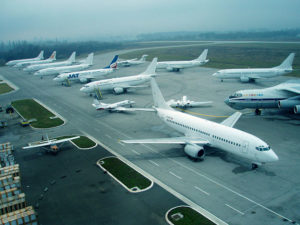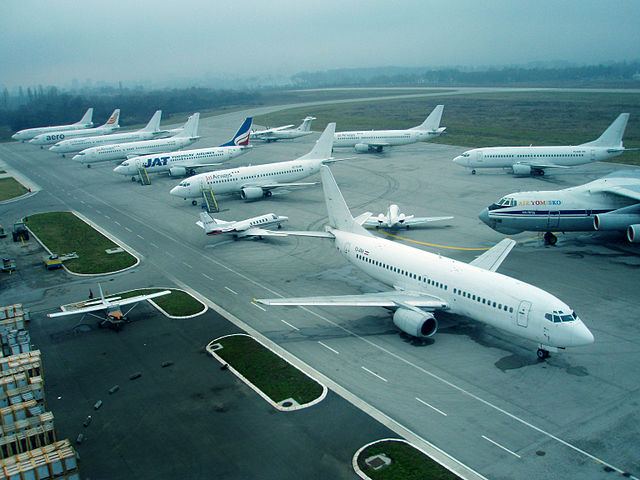 Air carriers are forecast to achieve a collective net profit of US$33.8 billion in 2018, a solid performance despite accelerating costs, according to the International Air Transport Association (IATA).
Air carriers are forecast to achieve a collective net profit of US$33.8 billion in 2018, a solid performance despite accelerating costs, according to the International Air Transport Association (IATA).
These rising costs, primarily fuel and labor, as well as the upturn in the interest rate cycle, are the main driver behind the downward revision from the previous forecast of $38.4 billion in December 2017, said IATA in its latest report.
In 2017 airlines earned a record $38.0 billion (revised from the previously estimate of $34.5 billion). Comparisons to this, however, are severely distorted by special accounting items such as one-off tax credits which boosted 2017 profits, it added.
Profits at the operating level, though still high by past standards, have been trending slowly downwards since early 2016, as a result of accelerating costs.
“Solid profitability is holding up in 2018, despite rising costs. The industry’s financial foundations are strong with a nine-year run in the black that began in 2010. And the return on invested capital will exceed the cost of capital for a fourth consecutive year. At long last, normal profits are becoming normal for airlines,” said Alexandre de Juniac, IATA’s director general and CEO.
This year airlines are facing significant pressures from rising fuel and labor costs in particular. Overall unit costs are forecast to rise 5.2% after a 1.2% increase in 2017, a significant acceleration.
Providing some offset to accelerating costs is a strong revenue environment, as demand from passengers and shippers continues to expand well above trend, and pricing has turned positive.
Overall revenues are expected to rise to $834 billion in 2018 (up 10.7% from $754 billion in 2017). Unit revenues are expected to rise by 4.2% in 2018, lagging the 5.2% rise in unit costs. This will squeeze profit margins.
Passenger, cargo demand
In terms of demand, passenger air travel is forecast to expand by 7.0% in 2018. This is slower than the 8.1% growth recorded for 2017 but still faster than the 20-year average (of 5.5%) for the sixth consecutive year. Demand is getting a boost from stronger economic growth and the stimulus from new city-pair direct services.
Total passenger numbers are expected to rise to 4.36 billion (up 6.5% from 4.1 billion in 2017). Passenger yields are expected to grow by 3.2% in 2018 after a 0.8% decline in 2017.
Cargo demand has benefitted from the largely unexpected acceleration in the growth of the global economy over the past year. As businesses rushed to respond, they turned to air transport to replenish inventory, producing strong air cargo growth in 2017. That restocking cycle has come to an end.
Cargo demand is expected to grow by 4.0%. This is a major drop from the 9.7% growth experienced in 2017, but it remains in line with the 20-year trend growth rate.
Total cargo carried is expected to increase to 63.6 million tonnes (from 61.5 million tonnes in 2017). Pharmaceuticals, e-commerce and other premium cargo services are expected to lead growth in 2018. Cargo yields are expected to improve by 5.1% (8.1% growth in 2017).
Risks to the industry outlook include the advancement of political forces pushing a protectionist agenda, uncertainty following the U.S. withdrawal from the Iran nuclear deal, lack of clarity on the impact of Brexit, numerous ongoing trade discussions, and continuing geopolitical conflicts.
Regional outlook
On a regional basis, North American airlines are expected to post a net profit of $15.0 billion (down from $18.4 billion in 2017), accounting for 44% of global profits (down from a peak share of 60% in 2015).
European airlines are forecast to generate the second highest net post-tax profits of $8.6 billion in 2018 (up from $8.1 billion in 2017) and a per passenger profit of $7.58 ($7.53 in 2017).
Asia-Pacific airlines benefitted from the strong growth in cargo revenues last year, since the region is the manufacturing center of the world. In 2017 the region generated the second largest profit at $10.1 billion. This year the region slips just behind Europe with net post-tax profits of $8.2 billion, as the end of the business inventory restocking cycle slows cargo, particularly relative to travel. The region is now the largest in both cargo and passenger markets, with 37% and 33% shares of these global markets.
Latin American airlines have achieved a strong recovery in financial performance to achieve a net profit of $0.9 billion (up from $0.5 billion in 2017). Restructuring, stronger commodity prices, and the economic recovery in Brazil all helped to improve the situation.
Middle East airlines are generating a recovery, though more muted than in Latin America. Net profits are forecast to rise to $1.3 billion in 2018 (up from $1.0 billion in 2017) or $5.89 per passenger ($4.81 in 2017).
African airlines continue their very slow emergence from the 2014 low point ($900 million loss) of financial performance, with losses continuing at the $100 million level. Net loss per passenger improved to $1.55 ($1.66 in 2017).
Photo: Almarq





